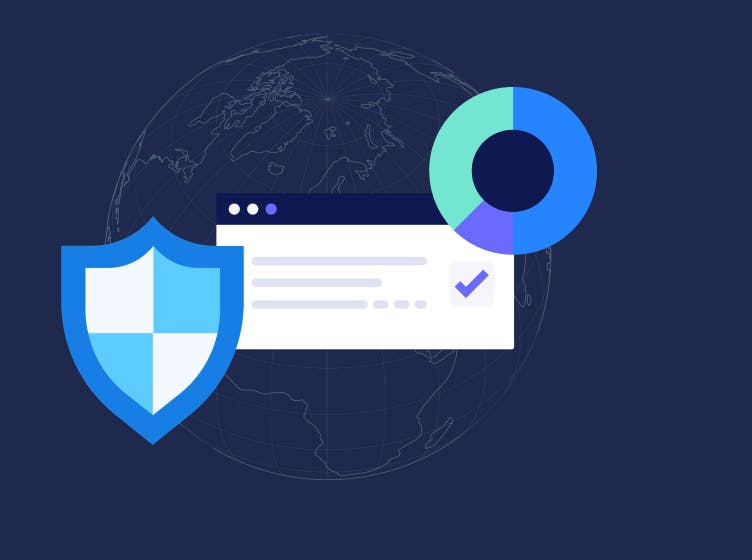GRC and IRM are relatively new terms, although both have been practiced by businesses long before the terms were coined.
While they are sometimes used interchangeably, you can think of IRM as building on and expanding the risk component of GRC. Let’s take a closer look at the similarities and differences below.
What is governance, risk, and compliance?
Governance, risk, and compliance refers to an integrated set of capabilities for meeting organizational goals, managing risk, and maintaining regulatory compliance.
GRC was first labeled by Michael Rasmussen at Forrester Research in 2002.
It can be broken down into three main components (although other disciplines fall under GRC as well). These three components are:
- Governance: the rules, processes, and policies that steer an organization and help it meet goals
- Risk: day-to-day, technical processes that are in place to mitigate and monitor risk
- Compliance: steps a company takes to meet standards and regulations to run safely and legally
Recommended Reading

6 Benefits of Continuous Monitoring for Cybersecurity
Read MoreWhat is integrated risk management?
Integrated risk management refers to the integrated set of capabilities for managing risk specifically. These capabilities include practices, processes, principles, and technologies for improving decision making and performance around risk management.
Gartner coined the term in 2016 after conducting a survey in late 2015, which showed that the majority of CEOs and senior executives were not using GRC software or even familiar with the term. Many understood the importance of risk management tools and practices, however, so Gartner redefined its coverage of GRC as Integrated Risk Management (IRM).
According to Gartner, IRM has six attributes that must be addressed by risk and security leaders to understand the full scope of their organization’s risks. These attributes make up an integrated risk management framework and are detailed below.
- Strategy: This refers to the enablement and implementation of a framework that defines how risk is identified, assessed, measured, monitored, and mitigated. An IRM framework should also help individuals how risks are tied directly to business objectives and their personal responsibilities.
- Assessment: This refers to the identification, evaluation, and prioritization of risks based on their assessed impact.
- Response: This refers to the identification and implementation of processes to mitigate risk or its impact if a risk event occurs.
- Communication and reporting: This refers to tracking and informing stakeholders of an organization’s risk response mechanisms identified previously as well as risk events.
- Monitoring: This refers to the identification and implementation of processes to track governance objectives, risk ownership and accountability, compliance with policies and decisions that are set through the governance process, risks to those objectives and the effectiveness of risk mitigation and controls.
- Technology: This refers to the design and implementation of an IRM architecture via IRM software that can act as a single source of truth for your organization’s unique risks, risk mitigation workflows, risk owners, reporting protocols, and monitoring processes.
GRC vs IRM
What are the similarities between GRC and IRM?
Both GRC and IRM have the same goal: the continued and reliable achievement of the organization’s objectives.
To achieve this goal, they both require a comprehensive view across all business units as well as key business partners, suppliers, and outsourced entities.
Software can help provide this visibility by breaking down data silos and connecting systems. It can also remove redundant and manual work to help the organization achieve its objectives faster.
What are the differences between GRC vs IRM?
The key difference between GRC and IRM is their focus on risk. With GRC, governance, risk, and compliance are all prioritized and interrelated. First, governance provides an organization with direction and objectives, which are then used to identify and manage risks that may prevent the organization from going in that direction or achieving those objectives.
Risk management not only identifies the uncertainty around meeting its objectives — it also sets boundaries for how an organization operates. These boundaries may be determined by voluntary obligations (like ethics or contracts) or mandatory obligations (like laws).
Compliance is then how an organization proves it has stayed within those boundaries and met its obligations.
With IRM, risk is at the foreground. Technology, processes and data as well as governance and compliance initiatives are aligned around the objective of simplifying, automating, and integrating strategic, operational, and IT risk management across an organization.
Below is a table that summarizes other key differences.
